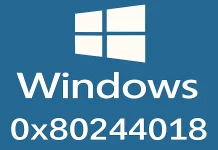SSD vs eMMC mean explained
People often hear about SSDs or HDDs because most laptops or PCs have them. However, sometimes when choosing a laptop you will come to find that some of them are equipped with eMMC storage. This can be a bit confusing as eMMCs are very rare, especially compared to SSDs. In this case, you may be wondering what is the difference between an eMMC drive and an SSD and which is more relevant for 2022.
What is an SSD and how does it work
To objectively compare these two types of storage you need to get to know each one better and let’s start with the SSD.
An SSD is a large, complex chip that is almost entirely made up of memory cells. The SSD has no moving parts, which means there’s no mechanical wear and tear at all.
Compared to a traditional hard drive, the difference in speed is quite noticeable, because the data moves faster because the SSD doesn’t need to rotate magnetic disks and move magnetic heads to work. Most notebook drives come in a 2.5-inch SATA or M.2 form factor and are very popular with newer laptop models.
What is eMMC and how it works
This is an abbreviation of the term – Embedded Multimedia Memory Card, and technically this detail is almost no different from the usual Micro SD flash drive or a separate memory block of a solid-state drive.
Quite often such drives are used in mobile phones and current tablet computers because they have a simple construction and are much cheaper. Also, such drives aren’t characterized by large amounts of memory. Today the most common “weight” of such a drive doesn’t exceed 128 GB. For comparison, the top models of SSD drive count for terabytes.
Typically, such a drive is soldered to the motherboard of a laptop or smartphone, and to replace it yourself as an SSD you won’t be able, and to change it can only be experts in the service center.
To put it simply, eMMC is a non-removable memory card, which is attached to the circuit board.
If you see a phone with 64GB of storage, that’s 64GB of eMMC storage. Similarly, if you buy a tablet, ultrabook or netbook, chances are it will have built-in eMMC storage instead of an SSD drive.
What are the differences and similarities of eMMC and SSD
Just 5 years ago few people were interested in comparing these two types of storage because SSDs were extremely expensive and the choice of eMMC was quite obvious for most ultrabooks or laptops.
However, now the cost of SSDs has come down to affordable storage and the storage capacity has multiplied so most modern devices are using eMMC storage. The only exception is smartphones which still actively use eMMC.
What is the difference between eMMC and SSD
The main difference between eMMC memory and SSD storage is speed and price. SSDs tend to be much faster than eMMC drives, but eMMC memory is much cheaper than SSDs of similar size.
The high speed of SSDs comes from the fact that the drive reads and writes data from (or to) multiple flash cells in parallel. eMMC can only perform sequential reads and writes, so there’s no mechanism for multiple cells in parallel.
On average, eMMC modules provide sequential read speeds of about 100 MB/s and write speeds of about 40 MB/. SSD drives offer much higher read and write speeds of 400 MB/s and 150 MB/s respectively.
What are the similarities between eMMC and SSD
Both eMMC memory and SSDs use NAND chips to store data. As a result, when working with eMMC as well as with SSD, the reading procedure is much faster than the data writing procedure.
And each flash cell must also be cleared before new data can be written to it. Also, as with SSDs, erasing information from cells in eMMC is much slower than writing to an empty cell.
Comparing eMMC and SSD
It isn’t really fair to compare these two memories, because they are used in slightly different areas. as said before eMMC is used in phones or tablets, while SSD is used in PCs or laptops. However, there are criteria by which they can be compared and they are shown in the table
| SSD | eMMC | |
|---|---|---|
| Storage type | Solid State Storage | Flash memory |
| Size | Typical SSD sizes are 22 mm wide and 16 to 110 mm long | TThe same size as an ordinary chip 11.5 mm wide and 13 mm long |
| It’s used in | PCs and laptops | Smartphones, tablets, laptops, digital cameras |
| Storing files | Faster for storing and searching large files | Faster for storing and searching small files |
| Transfer rate | Depending on the disk, the speed can be up to 1500 MB/s | The top speed is 400 MB/s. |
Therefore an SSD is much faster than an eMMC, but the eMMC is much smaller and cheaper to produce. If you are wondering if you should buy electronics with eMMC then you need to know that phones or tablets with eMMC memory are good, but a laptop is better to buy with SSD.





